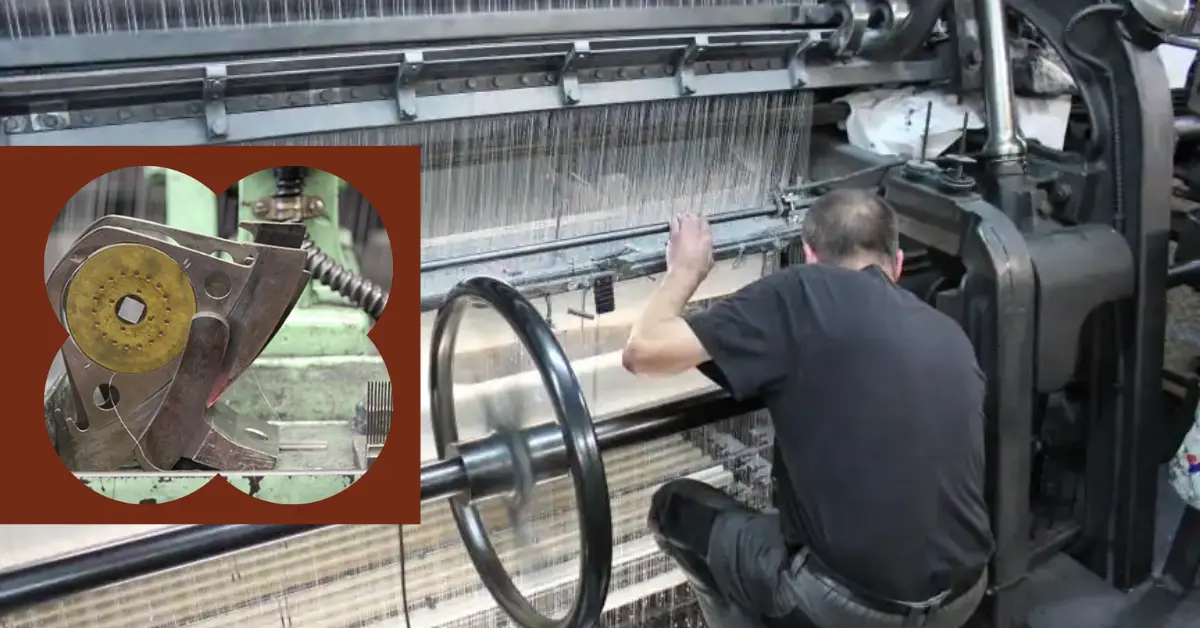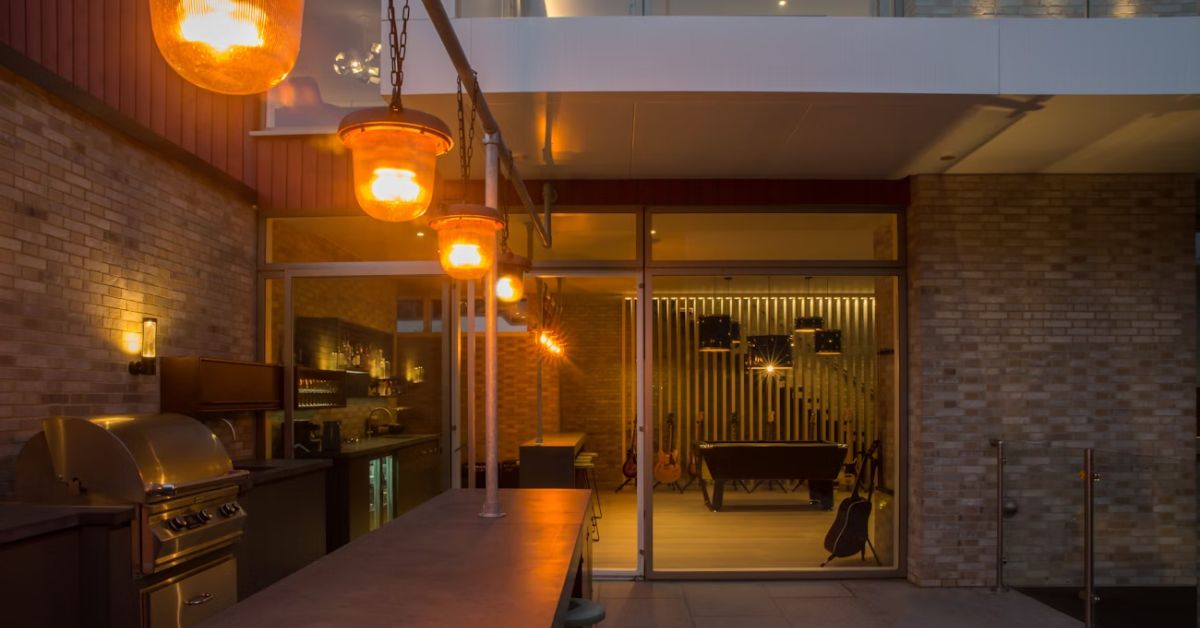Blog
Tulliste: Unveiling the Secrets of a French Gem

Introduction
Welcome to Tulliste, a charming commune nestled in the heart of the Limousin region. As you embark on this journey with us, get ready to uncover the hidden secrets and undeniable charm that make Tulliste a destination unlike any other.
Historical Roots of Tulliste
The story of Tulliste dates back to the Iron Age, around 500 BC when Celtic tribes first inhabited the area. These early signs of habitation set the stage for a rich and diverse history that would unfold over the centuries.
Fast forward to the 10th century, and Tulliste officially became a town in the Middle Ages. Serving as a crucial stop along the Way of St. James pilgrimage route, Tulliste flourished through trade and commerce, leaving behind remnants of Romanesque churches like the 12th-century abbey church that stands as a testament to its medieval past.
The 16th century brought challenges, as Tulliste found itself entangled in the Wars of Religion. Despite changing hands several times and suffering damage to its castle and churches, the town emerged into peace during the 17th century under the reign of the Sun King Louis XIV.
In the 19th century, Tulliste embraced modernity with the construction of roads and railways, leading to further growth and prosperity. Today, the town remains a picturesque market town, inviting you to explore its cobbled streets and uncover the tales of its eventful past.
Architectural Marvels of Tulliste
The centerpiece of Tulliste is its awe-inspiring 12th-century abbey church. With Romanesque architecture, an imposing stone facade, and striking vaulted ceilings, the church provides a glimpse into the town’s religious and architectural heritage. Regular concerts and events echo through its historic walls, offering visitors a chance to experience its stunning acoustics.
Wander through the town, and you’ll encounter the remnants of the old ramparts, silent witnesses to Tulliste’s defensive history. Take a stroll along these walls, enjoying scenic views of the Limousin landscape that once played a crucial role in the town’s protection.
The town center boasts well-preserved houses from the Middle Ages and Renaissance, each with sloping slate roofs and timbered facades. As you navigate the winding cobblestone streets, it’s like stepping back in time, surrounded by the echoes of centuries gone by.
Among the architectural wonders, the unique stone turrets catch your eye. More than mere ornamentation, these turrets house secrets within their walls. Venture beyond, and you’ll discover a network of underground tunnels, a historic hospital, and remnants of Tulliste’s captivating past waiting to be unearthed.
Culinary Delights of Tulliste
Now, let’s turn our attention to the culinary delights that define Tulliste. At the forefront is the artisanal Tulliste cheese, a regional delicacy originating from the Limousin region. Crafted with precision and care, this cheese tells a story that spans lush pastures, traditional techniques, and a labor of love passed down through generations.
Tulliste cheese begins with high-quality cow’s milk, sourced from Limousin cows grazing on the region’s grassy pastures. The milk is enriched with rennet and a lactic acid culture, setting the stage for the coagulation process that transforms it into soft, delectable curds.
The aged Tulliste cheese is a sensory delight. With a wrinkled, yellow-gold rind and a pale ivory interior adorned with small holes, its texture is a perfect balance between creamy and crumbly. As you savor each bite, notes of nuts, grass, and a tangy finish dance on your palate.
Beyond Tulliste cheese, the region offers a culinary tapestry rich in goat cheeses, crayfish stew from the Charente River, and two notable wines – Blanc Fumé de Parsac and rosé from Valençay. Truffle hunting, a popular local activity, adds to the gastronomic delights, with black truffles prized by gourmands.
The countryside surrounding Tulliste has long been a source of natural remedies. Mud from the Charente River, rich in magnesium, is used for muscle pain relief and skin conditioning treatments. Walnut leaves, transformed into an extract, offer a natural anti-inflammatory remedy, a tradition rooted in the practices of medieval monks.
Natural Resources and Traditional Practices
Tulliste’s fertile land is an ideal canvas for growing specialty crops. Walnuts, chestnuts, and truffles thrive in abundance, creating a landscape that not only captivates the eye but also contributes to the region’s culinary wealth.
The natural resources around Tulliste have not only been a source of culinary delight but also hold medicinal properties. Walnut leaves, known for their anti-inflammatory benefits, have been transformed into extracts for centuries, offering a natural remedy deeply ingrained in the region’s history.
Delve into the historical roots of Benedictine liqueur, and you’ll find that the plants used in this digestif and tonic were cultivated by monks in the Middle Ages. The liqueur, an embodiment of local tradition, has become a symbol of Tulliste’s ability to seamlessly blend nature and craftsmanship.
The mud from the Charente River, with its high magnesium content, has been a staple in local spa treatments. Used for muscle pain relief and skin conditioning, this natural resource connects the present-day with centuries-old practices, offering a therapeutic experience rooted in the region’s natural bounty.
The Craft of Tulliste Lace
As we shift our focus, let’s explore another facet of Tulliste’s artisanal heritage – Tulliste lace. This delicate craft has woven its way into the fabric of the town, both figuratively and literally, leaving an indelible mark on its cultural identity.
Tulliste lace is not merely a product; it’s a living testament to the region’s historical significance. Dating back centuries, lace-making has been an integral part of the town’s identity, with each delicate thread preserving the artistry of generations.
The production of Tulliste lace is an artisanal endeavor, with skilled hands meticulously crafting each piece. The lace trims, fabrics, and finished products reflect a commitment to tradition, a dedication that resonates through every intricate pattern.
From tablecloths to bedspreads and clothing, Tulliste lace adorns a myriad of products. Its versatility is a testament to the craftsmanship and creativity embedded in the hands of local artisans, ensuring that each piece tells a unique story.
To experience the allure of Tulliste lace, a visit to local boutiques is a must. La Maison du Passementier and Art & Création, both offering a curated selection of lace products, allow you to witness the artistry up close. For a wider selection, online retailers like France Patchwork and Etsy bring the elegance of Tulliste lace to a global audience.
The significance of Tulliste lace extends beyond aesthetics. It’s a heritage that must be preserved, and supporting local artisans ensures that the delicate craft of lacemaking continues to thrive for generations. Each purchase becomes a part of this legacy, a connection between the past and the present.
Where to Experience Tulliste
Immerse yourself in the secrets of Tulliste through guided tours or take the reins of your exploration with a self-guided adventure. Whether you’re fascinated by history, architecture, or culinary traditions, Tulliste has something to offer every curious traveler.
For a tangible piece of Tulliste’s heritage, local shops within the town itself are treasure troves. La Maison du Passementier and Art & Création beckon with lace trims, fabrics, and finished products, allowing you to carry a slice of Tulliste’s charm home with you.
Venture into nearby cities within the Corrèze department, such as Brive-la-Gaillarde, Tulle, and Ussel, to discover upscale boutiques showcasing Tulliste products. Maison Quercy in Brive, for instance, collaborates with regional artisans to keep traditional lacemaking techniques alive, offering an elevated shopping experience.
For those with a penchant for online shopping, platforms like France Patchwork and French Blossom serve as gateways to the world of Tulliste lace. Authentic and imported directly from producers in the Corrèze region, these platforms cater to a global audience, ensuring that the allure of Tulliste reaches every corner of the globe.
To truly immerse yourself in the Tulliste experience, a combination of guided tours, local shopping, and online exploration is recommended. Each avenue offers a unique perspective, allowing you to delve into the intricacies of Tulliste’s history, culture, and artisanal crafts.
Frequently Asked Questions
What makes Tulliste cheese unique?
Tulliste cheese is crafted from high-quality cow’s milk sourced from Limousin cows. Its distinctive aging process results in a wrinkled, yellow-gold rind and a creamy yet crumbly texture, offering flavors of nuts, grass, and a tangy finish.
Why are the stone turrets in Tulliste unique?
The stone turrets in Tulliste aren’t just architectural embellishments; they house secrets within. These turrets lead to underground tunnels, a historic hospital, and remnants of Tulliste’s past. Each one tells a story waiting to be uncovered.
What are the natural remedies found in Tulliste?
Tulliste’s natural resources play a role in local remedies. Mud from the Charente River, rich in magnesium, is used for muscle pain relief and skin conditioning. Additionally, walnut leaves are transformed into an extract with natural anti-inflammatory properties.
How can one experience Tulliste lace?
Tulliste lace, a historical craft, can be experienced through guided tours, local shops like La Maison du Passementier, or online retailers such as France Patchwork. Each piece, from trims to finished products, reflects the region’s rich lacemaking tradition.
Where can I buy authentic Tulliste products?
Authentic Tulliste products can be found in local shops within Tulliste itself, such as La Maison du Passementier. Upscale boutiques in nearby cities like Brive-la-Gaillarde also offer a selection. Online platforms like France Patchwork and Etsy provide a global avenue for purchasing Tulliste lace and other products.
Conclusion
As we wrap up this journey through Tulliste, take a moment to reflect on the secrets uncovered and the charm experienced. From medieval architecture to artisanal cheese, natural remedies to delicate lace, Tulliste reveals itself as a multifaceted gem waiting to be explored.
To those who now carry a piece of Tulliste in their hearts, consider this an invitation to explore further. The cobbled streets, historic churches, and artisanal crafts await your discovery. Tulliste is not just a destination; it’s an experience that lingers, inviting you to return and uncover even more.
As we bid farewell to Tulliste, let its story be a reminder of the richness embedded in local cultures. Whether in the heart of France or beyond, every corner of the world holds tales of history, tradition, and craftsmanship. As you travel, carry the spirit of Tulliste with you, and let it kindle a broader appreciation for the diverse narratives that shape our global tapestry.
Blog
Kelcy Warren: Building an Energy Empire

Kelcy Warren has been a pivotal figure in the energy sector, transforming it with his visionary leadership and strategic acumen. As the co-founder of Energy Transfer, Kelcy Warren has significantly influenced the landscape of natural gas and petroleum transportation in the United States. His journey from humble beginnings to the helm of a multi-billion-dollar enterprise exemplifies a blend of entrepreneurial spirit and astute market insight.
In the early 2000s, Warren recognized the shifting dynamics in the energy market. At a time when natural gas production was booming, he saw the potential for infrastructure to bridge the gap between supply and demand. This foresight led to the acquisition of TXU Fuel Co’s midstream natural gas assets in 2004, marking Energy Transfer’s entry into the Barnett Shale. This move was the first of many strategic acquisitions that would diversify and strengthen the company’s portfolio.
Under Warren’s leadership, Energy Transfer expanded its operations to include a variety of hydrocarbon streams. The 2012 acquisition of Sunoco not only diversified the company’s hydrocarbon streams but also provided a footprint in the Marcellus Shale. This diversification was crucial in hedging against market volatility, ensuring that the company remained resilient through the ups and downs of the energy market.
Warren’s ability to anticipate and adapt to market trends has been a hallmark of his career. During the shale gas boom, he led Energy Transfer through a series of transformative acquisitions and infrastructure projects. The construction of the Dakota Access Pipeline, which showcased Warren’s commitment to enhancing the nation’s energy infrastructure. This pipeline, running from the Bakken production area in North Dakota to Illinois, has significantly bolstered Energy Transfer’s capacity to transport oil efficiently.
The entrepreneurial mindset that Warren instilled in Energy Transfer has driven the company to continually seek growth opportunities. The acquisition of Southern Union in 2011 and Florida Gas Transmission further extended the company’s reach and capabilities. These strategic moves allowed Energy Transfer to transport a significant portion of the nation’s natural gas and petroleum, reinforcing its position as a leader in the energy sector.
Energy Transfer’s revenue growth is a testament to Warren’s strategic vision. From $1 billion in late 2003, the company’s revenue peaked at nearly $90 billion by the end of 2022. This remarkable growth was achieved through a combination of strategic acquisitions, infrastructure development, and market responsiveness. Warren’s background in civil engineering enabled him to oversee notable repurposing projects, such as the conversion of the Trunkline Pipeline from natural gas to oil, which connected to the Dakota Access Pipeline.
Warren’s influence extends beyond the energy sector. His philanthropic efforts, often under the radar, have made significant contributions to communities. The creation of Klyde Warren Park in Dallas, named after his son, transformed an urban space into a vibrant green area connecting uptown and downtown Dallas. Warren’s support for this project, including a $10 million gift in 2012 and a subsequent $20 million gift in 2019, underscores his commitment to community development. Recently, Warren gifted $12 million to the University of Texas at Arlington’s resource and energy engineering (REE) field. This was the largest single philanthropic investment in UT Arlington history.
As Energy Transfer continues to evolve, Warren’s legacy as a transformative leader in the energy sector is firmly established. His ability to navigate market changes, execute strategic acquisitions, and develop critical infrastructure has positioned Energy Transfer as a key player in the global energy landscape. Warren’s story is one of resilience, vision, and unwavering commitment to growth.
In reflecting on his journey, Kelcy Warren remains modest about his achievements. He hopes to be remembered as a tough yet fair leader, dedicated to the growth and success of Energy Transfer. With day-to-day operations now led by co-CEOs Mackie McCrea and Tom Long, Warren’s influence continues to guide the company’s strategic direction. His story serves as an inspiration for future generations of entrepreneurs and leaders in the energy sector.
Blog
Lock or Hard Point on Drawer Slides ?

When it comes to designing or repairing furniture, particularly drawers, one often faces the choice between implementing a lock or a hard point on the drawer slides. Understanding the differences between these two mechanisms and their respective advantages can greatly influence the functionality and user experience of the furniture. This article explores the concepts of locks and hard points on drawer slides, highlighting their uses, benefits, and scenarios in which each is most appropriate.
What is a Drawer Slide ?
Drawer slides are mechanisms that allow drawers to open and close smoothly. They consist of two main parts: the rail, which is mounted to the furniture, and the sliding element attached to the drawer. Depending on the design, drawer slides can provide various ranges of motion, load capacities, and functionalities, such as soft-closing or self-closing features.
Lock on Drawer Slides :
A lock on drawer slides is a mechanism that secures the drawer in a specific position, preventing it from being opened or closed unintentionally. Locks can be engaged manually or automatically, and they are commonly used in applications where security and safety are paramount.
Types of Locks
- Manual Locks : These require the user to engage or disengage the lock manually. Common examples include latches, keyed locks, or thumb turns.
- Automatic Locks : These locks engage automatically when the drawer reaches a certain position, providing a hands-free locking mechanism. They are often used in industrial settings where operational efficiency is critical.
Hard Point on Drawer Slides
A hard point, sometimes referred to as a detent, is a built-in resistance point in the drawer slide mechanism. This resistance provides a tactile feedback that the drawer has reached a certain position, such as fully closed or fully open. Unlike locks, hard points do not prevent movement entirely but instead offer a slight resistance.
Characteristics of Hard Points
- Tactile Feedback : The primary purpose of a hard point is to provide feedback to the user, indicating the drawer’s position.
- Controlled Movement : By offering resistance, hard points help control the movement of the drawer, preventing it from sliding too freely and reducing the risk of it being left ajar unintentionally.
When to Use Locks on Drawer Slides ?
Security and Safety
Locks are essential in applications where security is a concern. For example, in medical or office environments where sensitive documents or medications are stored, locks ensure that only authorized personnel can access the contents.
Transportation
In vehicles or mobile units, such as RVs or service vans, locks on drawer slides prevent drawers from opening during transit. This is crucial for maintaining order and preventing damage to the contents.
Industrial Settings
In industrial applications, locks can secure tools or equipment within drawers, ensuring they do not fall out or get misplaced. This is particularly important in environments where precision and organization are vital.
Conclusion
Choosing between a lock or a hard point on drawer slides depends largely on the specific needs of the application. Locks are essential for security and preventing accidental openings, making them suitable for environments where safety and controlled access are critical. On the other hand, hard points offer a simpler, more cost-effective solution for keeping drawers in place, ideal for everyday furniture and applications where ease of access is prioritized.
Understanding these mechanisms and their benefits allows for better decision-making when designing or repairing furniture, ensuring that the drawers function optimally for their intended use. Whether you opt for a lock or a hard point, selecting the right mechanism will enhance the usability and functionality of your drawers.
Blog
Shining Light on Hospitality: The Role of Lighting Manufacturers

In the dynamic world of hospitality, ambiance is everything. From boutique hotels to luxury resorts, the right lighting sets the mood and enhances the overall guest experience. Behind the scenes, hospitality lighting manufacturers play a crucial role in illuminating these spaces with creativity, innovation, and functionality. Let’s delve into the realm of hospitality lighting manufacturers and explore their significance in shaping memorable guest experiences. Vorlane, a leading LED lighting manufacturer based in China. The website is in English and caters to a global audience.
The Power of Illumination
The hospitality industry thrives on creating immersive environments that captivate guests and leave a lasting impression. Lighting plays a pivotal role in achieving this goal, as it can evoke emotions, highlight architectural features, and define the ambiance of a space. Hospitality lighting manufacturers are the artisans behind the scenes, crafting bespoke lighting solutions tailored to the unique needs of hotels, restaurants, spas, and other hospitality venues.
Understanding the Role of Hospitality Lighting Manufacturers
Design Collaboration: Collaborating closely with architects, interior designers, and hospitality developers, lighting manufacturers bring creative visions to life. Through meticulous planning and innovative design, they ensure that lighting seamlessly integrates with the overall aesthetic and functionality of the space.
Customization and Flexibility: Every hospitality venue has its own personality and branding. Lighting manufacturers offer customization options to tailor fixtures, finishes, and lighting effects to match the specific requirements and design concepts of each project. From elegant chandeliers to modern LED installations, versatility is key in catering to diverse design preferences.
Quality and Durability: In the demanding environment of hospitality, lighting fixtures must withstand frequent use and maintain optimal performance over time. Manufacturers prioritize quality materials, engineering excellence, and rigorous testing to ensure that their products meet the industry’s standards for durability, safety, and energy efficiency.
Innovations Driving the Future of Hospitality Lighting
LED Technology: The shift towards LED lighting has revolutionized the hospitality industry, offering energy efficiency, longevity, and endless design possibilities. Lighting manufacturers continually push the boundaries of LED technology, exploring new ways to enhance color rendering, dimming capabilities, and control systems for dynamic lighting experiences.
Smart Lighting Solutions: With the rise of IoT (Internet of Things) technology, smart lighting solutions are becoming increasingly prevalent in hospitality settings. Manufacturers develop intelligent lighting systems that can be programmed, monitored, and adjusted remotely, allowing for greater flexibility, energy savings, and personalized guest experiences.
Sustainable Practices: As sustainability becomes a top priority for the hospitality industry, lighting manufacturers are embracing eco-friendly materials, energy-efficient designs, and recyclable components. From using recycled materials in production to implementing low-energy consumption technologies, manufacturers are aligning their practices with environmental stewardship.
The Impact of Lighting on Guest Experience
Atmosphere and Ambiance: Lighting sets the stage for memorable experiences, whether it’s creating a cozy atmosphere in a boutique hotel lobby or setting the mood for a romantic dinner in a restaurant. Thoughtfully designed lighting enhances the ambiance, evokes emotions, and reinforces the brand identity of the establishment.
Wayfinding and Navigation: In large hospitality venues such as resorts and convention centers, lighting plays a crucial role in guiding guests through spaces safely and intuitively. Manufacturers design lighting solutions that not only illuminate pathways but also highlight points of interest and enhance spatial orientation for an effortless guest journey.
Wellness and Comfort: Beyond aesthetics, lighting can also impact the well-being and comfort of guests. Manufacturers incorporate circadian lighting principles, which mimic the natural patterns of daylight, to promote relaxation, productivity, and overall wellness. From adjustable color temperatures to tunable lighting scenes, guests benefit from personalized lighting experiences that cater to their needs.
Illuminating Hospitality Experiences
In the ever-evolving landscape of hospitality, lighting manufacturers are the unsung heroes behind the scenes, illuminating spaces with creativity, innovation, and functionality. From design collaboration to technological innovation, their contributions shape memorable guest experiences and elevate the ambiance of hospitality venues around the world. As the industry continues to evolve, the future of hospitality lighting promises to be even more luminous and immersive, enriching the journey for guests and setting new standards of excellence in hospitality design.
You May Also Like: The Developing Landscape of Home Buying: How New Home Sales Consultants Are Changing the Game
-

 Fashion7 years ago
Fashion7 years agoThese ’90s fashion trends are making a comeback in 2017
-

 Technology4 months ago
Technology4 months agoCrack the Code: Optimizing Your SEO Efforts with Advanced Rank Tracking Techniques
-

 Entertainment7 years ago
Entertainment7 years agoThe final 6 ‘Game of Thrones’ episodes might feel like a full season
-

 Fashion7 years ago
Fashion7 years agoAccording to Dior Couture, this taboo fashion accessory is back
-

 Entertainment7 years ago
Entertainment7 years agoThe old and New Edition cast comes together to perform
-

 Sports7 years ago
Sports7 years agoPhillies’ Aaron Altherr makes mind-boggling barehanded play
-

 Business7 years ago
Business7 years agoUber and Lyft are finally available in all of New York State
-

 Entertainment7 years ago
Entertainment7 years agoDisney’s live-action Aladdin finally finds its stars





